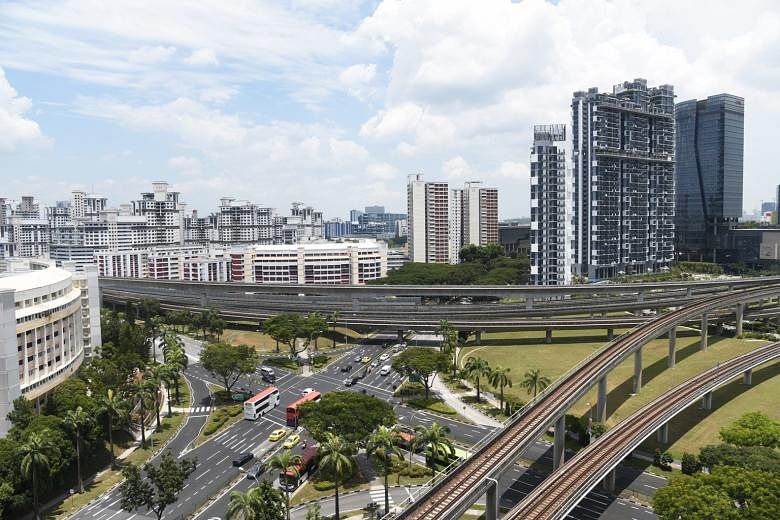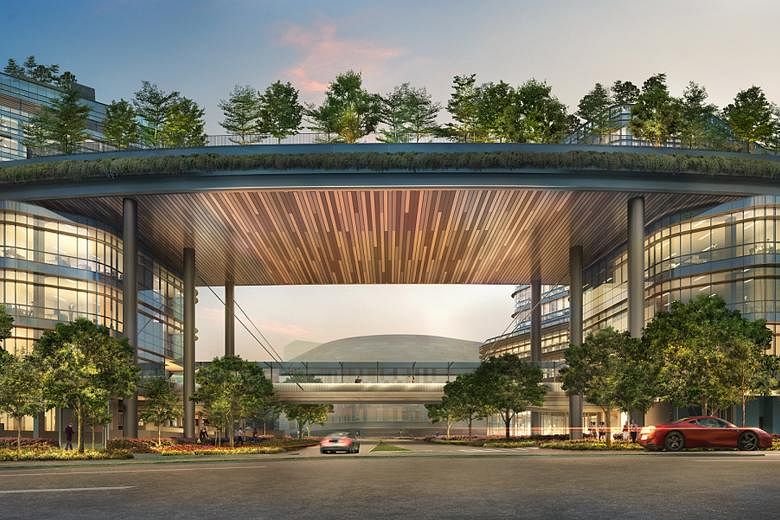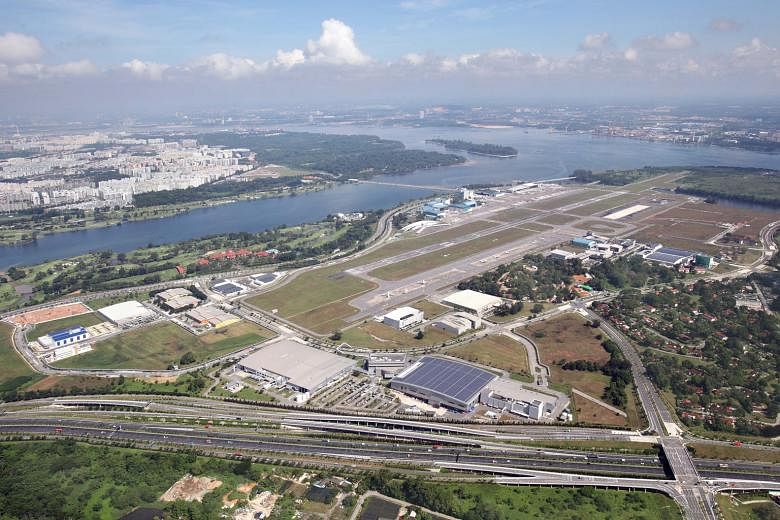The remaking of Jurong Lake District - earmarked as the second Central Business District - took another leap forward last week with the shortlisting of five planning teams to help devise its masterplan.
They were selected from 35 teams that submitted ideas after the Urban Redevelopment Authority (URA) put out a call for proposals to transform the area into a "district of the future", with a new business precinct and High Speed Rail terminus.
One of the five teams will be appointed as consultant by January, and will work with the URA and relevant agencies to flesh out a detailed plan for Jurong Lake District that will feature car-lite, innovative urban spaces and a mix of commercial and residential developments.
The blueprint to revamp the area, unveiled in 2008, now has 220,000 sq m of office space and 216,000 sq m of retail space. When fully developed, Jurong Lake District could support 175,000 jobs, the URA said.
"Companies within Jurong Lake District can also leverage and create synergies with complementary businesses in the manufacturing, logistics and support services in Jurong West, Tuas Port and the upcoming Jurong Innovation District to grow their operations," said Mr Lee Wai Kin, group director for strategic planning at URA.
-
220k
Amount of office space in sq m at Jurong Lake District now.
216k
Amount of retail space in sq m at Jurong Lake District now.
175k
Number of jobs that the URA says Jurong Lake District can support when it is fully developed.
Jurong will seek to emulate the success of Singapore's first regional centre in Tampines in the east, and see itself evolve into a thriving commercial hub. The dramatic transformation of Tampines Regional Centre started in the 1990s, on the back of the Government's effort to move commercial activities to other parts of the island to ease congestion and prevent over-development in the central area.
Since then, more regional centres have emerged: Jurong Lake District, Woodlands Regional Centre and Seletar Regional Centre. Together, the four regional centres - each with a distinct identity - will help to sustain Singapore's competitiveness by supporting further growth to meet the commercial, retail, and housing needs. Woodlands Regional Centre, in particular, is envisioned as Singapore's Northern Gateway, with a cross-border link - the Johor-Singapore rapid transit system - being planned.
The URA said Woodlands Regional Centre has 10,000 sq m of office space and 88,000 sq m of retail space, with the potential to eventually provide up to 100,000 jobs when its transformation is completed.
"When the new MRT stations in Woodlands, as part of the Thomson-East Coast Line, are completed, I reckon developers, investors and tenants will increasingly see Woodlands as an efficient and attractive border town," says R'ST Research director Ong Kah Seng.
The new stations - Woodlands North and Woodlands South - under the Thomson-East Coast Line will further boost connectivity when they are completed in 2019.
The development of Woodlands Regional Centre got off the ground with the sale in April 2014 of its first commercial site, which is being jointly developed into an integrated commercial project, Woods Square, by Far East Organization, Sekisui House and Far East Orchard.
"This is our seventh project in Woodlands, following four residential and two industrial developments... We have been participating in the Woodlands story since the late 1990s with our first project, the Woodgrove Bungalows," Ms Shaw Lay See, chief operating officer for property sales at Far East Organization, told The Straits Times.
Woods Square will be ready by 2021, and Far East Organization is slated to be a major occupier as it plans to relocate staff there.
The development of the fourth regional centre at Seletar is still some way off - set to start after 2030. "Located next to the Seletar Aerospace Park, it has the potential to grow to two times the size of Tampines Regional Centre," said URA's Mr Lee.
Analysts say careful long-term planning will ensure the regional centres meet the needs of Singapore's future development. "The gestation period for any regional centre can be as long as 20 to 30 years... (Their development) should be phased to help with the economy at different stages," noted Ms Christine Li, research director at Cushman & Wakefield.
Apart from the four key regional centres, a handful of business clusters and fringe centres also supports growth in key sectors and emerging industries, including one-north for the biomedical and infocomm and media companies.




